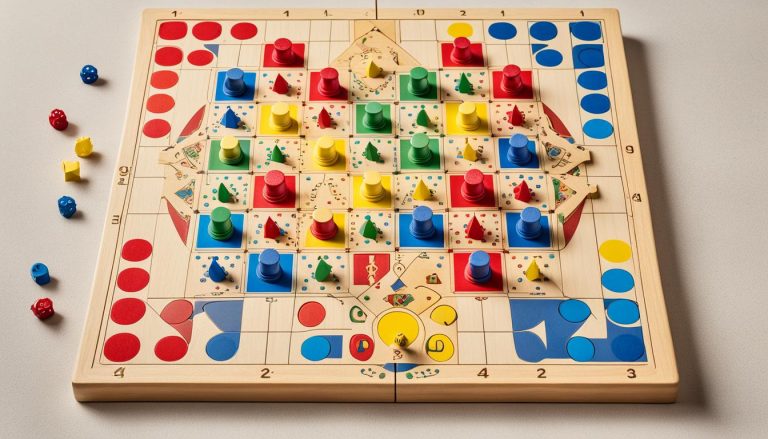In this comprehensive guide, we will walk you through the exciting world of benchball. Whether you’re a beginner looking to learn the basics or a seasoned player looking for advanced techniques and strategies, this guide has got you covered. Get ready to master benchball and have a blast on the court!
Benchball, also known as bench dodgeball, is a fast-paced team sport that combines elements of dodgeball and basketball. It’s played with two teams, each aiming to eliminate the players from the opposing team while scoring points. The objective is simple – have fun, be active, and work together to secure victory for your team.
How to Play Benchball? – Rules and Gameplay
Before you start playing benchball, it’s essential to understand the rules and gameplay. This section will provide you with a comprehensive overview of the game, including the key rules and how to play. So let’s dive in and explore the exciting world of benchball!
The Objective
The objective of benchball is to score points by throwing the ball at the opposing team’s players, eliminating them from the game. The team with the last remaining player(s) wins the round.
Starting the game
To start the game, both teams line up on opposite sides of the court. The referee throws the ball into the air, and players from both teams try to grab it. Once a player catches the ball, they can throw it at the opponent’s team to eliminate their players.
Scoring
Points are scored when you successfully hit an opponent with the ball, causing them to be eliminated. Each eliminated player earns your team one point. To win a match, you must accumulate the highest number of points within the allocated time or reach a predetermined score.
Player Positions
In benchball, there are different player positions that require specific roles and responsibilities:
- The throwers: These players focus on throwing the ball to eliminate opponents
- The catchers: These players specialize in catching opponents’ throws to eliminate them from the game
- The blockers: These players strategically position themselves to block opponents’ throws
Fouls
While benchball is an action-packed game, there are certain fouls to be aware of:
- Headshots: Direct hits above the shoulders are considered fouls and are not allowed
- Stepping out of bounds: Players must remain within the boundaries of the court to avoid fouls
- Social fouls: Unsportsmanlike behavior, such as excessive arguing or taunting opponents
Winning the Game
To win a benchball game, your team must outscore the opponent within the allocated time or reach the predetermined score. Teamwork, strategy, and quick reflexes are key to achieving victory.

Now that you have a solid understanding of benchball rules and gameplay, it’s time to assemble your team, practice your throws, and perfect your dodging skills. Remember, benchball is all about having fun while competing on the court! Get ready for an adrenaline-pumping game that will keep you on your toes!
Benchball Techniques and Skills
Enhancing your benchball techniques and skills will take your gameplay to the next level. Whether you’re a beginner or an experienced player, mastering these essential techniques is crucial for success on the court.
Throwing
One of the core skills in benchball is throwing the ball accurately and with power. Focus on your throwing technique, ensuring a fluid motion that generates maximum force. Keep your eyes on the target, step forward with your dominant foot, and follow through with your arm to achieve a powerful and accurate throw.
Catching
Developing strong catching skills is essential to maintain possession of the ball and contribute to your team’s offense. Practice hand-eye coordination and soft hands to securely catch incoming throws. Anticipate the trajectory of the ball and position yourself accordingly to increase your chances of successful catches.
Dodging
Dodging is an effective defensive technique that allows you to evade incoming throws and avoid being eliminated from the game. Move laterally, change your direction frequently, and use quick bursts of speed to outmaneuver your opponents. Mastering the art of dodging will make you a valuable asset to your team’s defense.
Blocking
In benchball, blocking is a crucial skill for both defense and offense. When on defense, use your body and arms to block incoming throws, denying the opposing team a score. On offense, strategically position yourself in front of opponents to provide a shield for your teammates, allowing them to throw the ball with less risk of being caught.
Improving your benchball skills requires practice, dedication, and a focus on continuous improvement. Here are some additional tips to help you enhance your overall performance:
- Focus on agility: Incorporate agility drills into your training routine to improve your footwork and reaction time on the court.
- Develop coordination: Work on hand-eye coordination exercises to enhance your catching and throwing abilities.
- Study game strategies: Learn from experienced players, watch benchball matches, and analyze different strategies to gain insights and improve your game understanding.
- Communicate with your teammates: Effective communication is key to successful teamwork. Coordinate your moves, share information, and support each other to maximize your team’s efficiency.
| Technique | Skill Level |
|---|---|
| Throwing | Intermediate |
| Catching | Beginner |
| Dodging | Advanced |
| Blocking | Intermediate |
By mastering these benchball techniques and skills, you’ll become a valuable asset to your team, contributing to victories and enjoying the exhilaration of this fast-paced, team-oriented sport.

Benchball Strategies and Tactics
To excel in benchball, it’s crucial to develop effective strategies and tactics. A well-planned approach can give your team the upper hand and increase your chances of victory. Here, we’ll delve into various benchball tactics that will help you outsmart your opponents both offensively and defensively.
1. Offensive Strategies
When it comes to offense, having a solid game plan can make all the difference. Consider the following tactics:
- Target Weak Points: Identify the weaknesses in the opposing team’s defense and focus your attacks on those areas. This can create scoring opportunities for your team.
- Fast Breaks: Look for opportunities to quickly transition from defense to offense. This catching the opposing team off-guard and gives you an advantage.
- Strategic Passing: Utilize quick and accurate passes to confuse the defense and create openings for your teammates.
2. Defensive Strategies
A strong defense is essential for preventing the opposing team from scoring. Consider incorporating these tactics:
- Zone Defense: Divide the court into zones and assign each player a specific area to defend. This strategy helps cover more space and makes it difficult for the opposition to penetrate your defense.
- Communication: Effective communication is key in maintaining a solid defense. Constantly communicate with your teammates to ensure everyone is aware of their defensive assignments.
- Anticipate Moves: Study the opposing team’s patterns and anticipate their moves. This will enable you to intercept their passes or block their shots effectively.
3. Team Dynamics
Building a strong team dynamic is crucial in benchball. Consider implementing the following strategies:
- Trust and Support: Foster an environment of trust and support amongst your teammates. This will lead to better coordination and teamwork on the court.
- Positional Awareness: Each player should be aware of their position and how it contributes to the team’s overall strategy. Understanding everyone’s role enables better decision-making during the game.
- Adaptability: Be willing to adapt your tactics and strategies based on the flow of the game. Flexibility and quick thinking are essential in benchball.
Remember, a successful benchball team combines effective strategies, tactical execution, and strong teamwork. With practice and perseverance, you’ll develop a winning formula that can lead you to victory on the court!

Conclusion
Congratulations! You’ve now gained a solid understanding of benchball. From learning the rules and mastering techniques to developing winning strategies, you’re well-equipped to enjoy this energetic and thrilling team game. Keep practising, honing your skills, and get ready to have an incredible time playing benchball!
FAQ
What are the rules of benchball?
The rules of benchball include starting the game with a jump ball, throwing the ball to hit the opponent’s bench, and avoiding getting hit by the ball. Each team takes turns throwing the ball, and players are not allowed to cross the centerline. If a player catches the ball, the opposing team loses a player, and the game continues until one team eliminates all players from the other team. Fouls, such as stepping out of bounds or holding the ball for too long, result in penalties.
What is the aim of benchball?
The aim of benchball is to score points by hitting the opposing team’s bench while defending your own bench. The team that eliminates all players from the other team first wins the game. It’s a fast-paced and highly competitive game that requires teamwork, strategy, and skillful ball handling.
How to play bench dodgeball?
Bench dodgeball is a variation of benchball where players use dodging as the main defensive technique. The objective is still to eliminate all players from the opposing team, but instead of catching the ball, players must dodge it to avoid getting out. It adds an extra level of challenge and excitement to the game, requiring players to have quick reflexes and agility.






